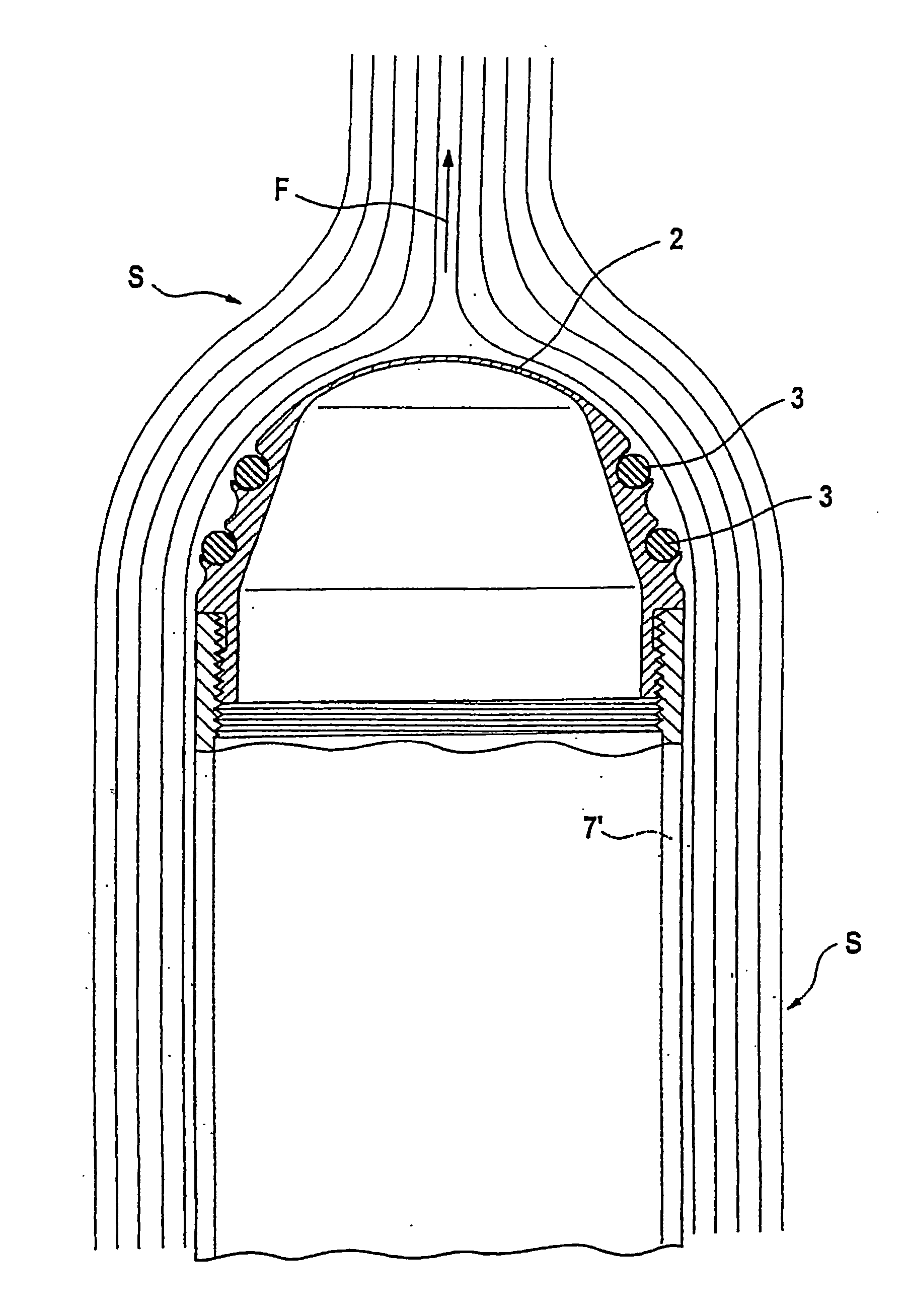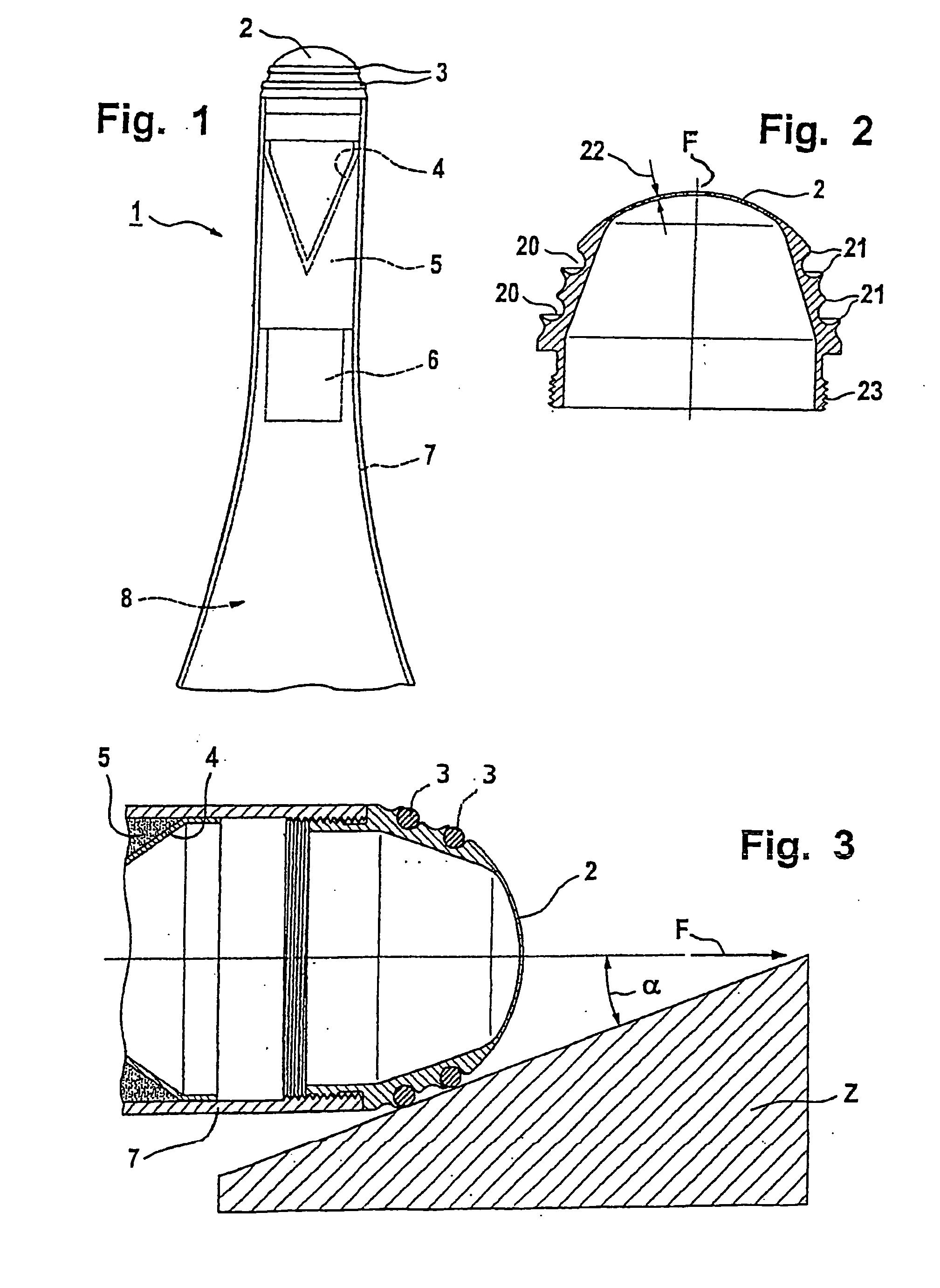Impact part of a projectile
- Summary
- Abstract
- Description
- Claims
- Application Information
AI Technical Summary
Benefits of technology
Problems solved by technology
Method used
Image
Examples
Embodiment Construction
[0029] A head of a projectile of a tandem hollow charge is designated 1 in FIG. 1. An impact part comprises a tip 2 in the shape of a dome with embedded elastomers, i.e. with O-rings 3 of silicone rubber, and it is set up on a preliminary charge with a covering 4, an explosive 5 and a detonation device 6. The projectile envelope 7 enclosing the whole is of a slender configuration and has a known main charge (not shown) at the end of its cavity. Behind the explosive 5 and the detonation device 6 the projectile envelope 7 encloses a cavity 8 which forms the spacing distance required to the main charge.
[0030] The sectional illustration of FIG. 2 shows the profile of the impact part of FIG. 1. Annular grooves 20, which have sharp edges 21, are formed at right angles to the axis (flight direction) F. The tip 2, which is very thin-walled, and of lesser thickness than the impact part's lateral walls of its thickness. In the impact part's lower region, i.e. at its rear, an external thread ...
PUM
 Login to view more
Login to view more Abstract
Description
Claims
Application Information
 Login to view more
Login to view more - R&D Engineer
- R&D Manager
- IP Professional
- Industry Leading Data Capabilities
- Powerful AI technology
- Patent DNA Extraction
Browse by: Latest US Patents, China's latest patents, Technical Efficacy Thesaurus, Application Domain, Technology Topic.
© 2024 PatSnap. All rights reserved.Legal|Privacy policy|Modern Slavery Act Transparency Statement|Sitemap



